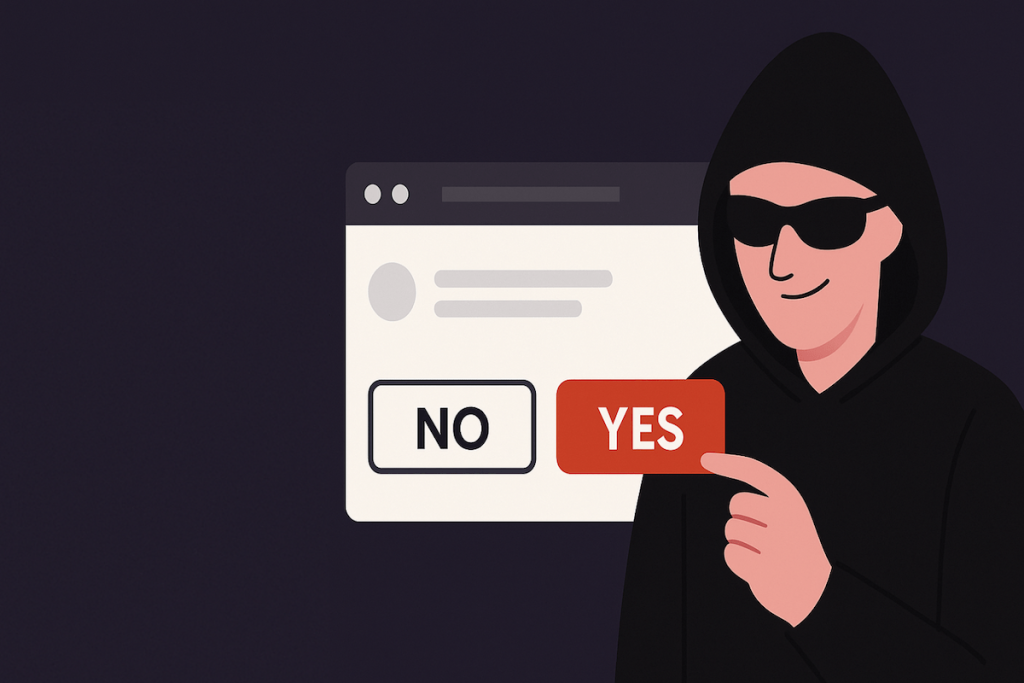What is Dark Pattern in UX?

Dark patterns in UX (User Experience) are design choices that intentionally trick or manipulate users into taking actions they might not otherwise take. These patterns exploit cognitive biases or mislead users to benefit the business often at the expense of user autonomy, privacy, or money.
🔍 Key Characteristics of Dark Patterns
- Deceptive: They hide or obscure true intentions.
- Manipulative: They steer users toward specific outcomes.
- Non-consensual: They often bypass informed consent.
- Business-benefiting, user-harming.
💡 Common Types of Dark Patterns
- Bait and Switch
A user tries to do one thing, but something else happens instead.
Example: Clicking a button that appears to cancel something, but actually signs you up. - Roach Model
Easy to get into, hard to get out.
Example: Subscribing takes one click, but cancelling requires calling customer service. - Hidden Costs
Unexpected charges appear late in the checkout process.
Example: Surprise shipping fees on the final step of checkout. - Privacy Zuckering
Named after Mark Zuckerberg tricking users into sharing more data than they intend.
Example: Pre-checked boxes for data sharing. - Forced Continuity
Users are automatically charged after a free trial without clear notice or easy cancellation. - Misdirection
Using visuals or wording to direct attention away from what matters.
Example: A bright “Yes” button next to a faint gray “No.” - Confirmshaming
Guilt-tripping users into opting into something.
Example: “No thanks, I hate saving money.” - Trick Questions
Questions designed to confuse users into giving an undesired answer.
⚖️ Ethical Implications
- Loss of trust: Users feel manipulated or cheated.
- Legal consequences: Increasingly regulated (e.g., GDPR, FTC in the US).
- Bad UX: Ultimately harms long-term brand loyalty and user satisfaction.
✅ Good UX vs Dark Pattern UX
| Good UX | Dark Pattern UX |
|---|---|
| Transparent and honest | Deceptive or manipulative |
| Prioritizes user needs | Exploits user vulnerabilities |
| Builds trust and loyalty | Maximizes short-term conversion |
Graphic Design > What is Dark Pattern in UX?